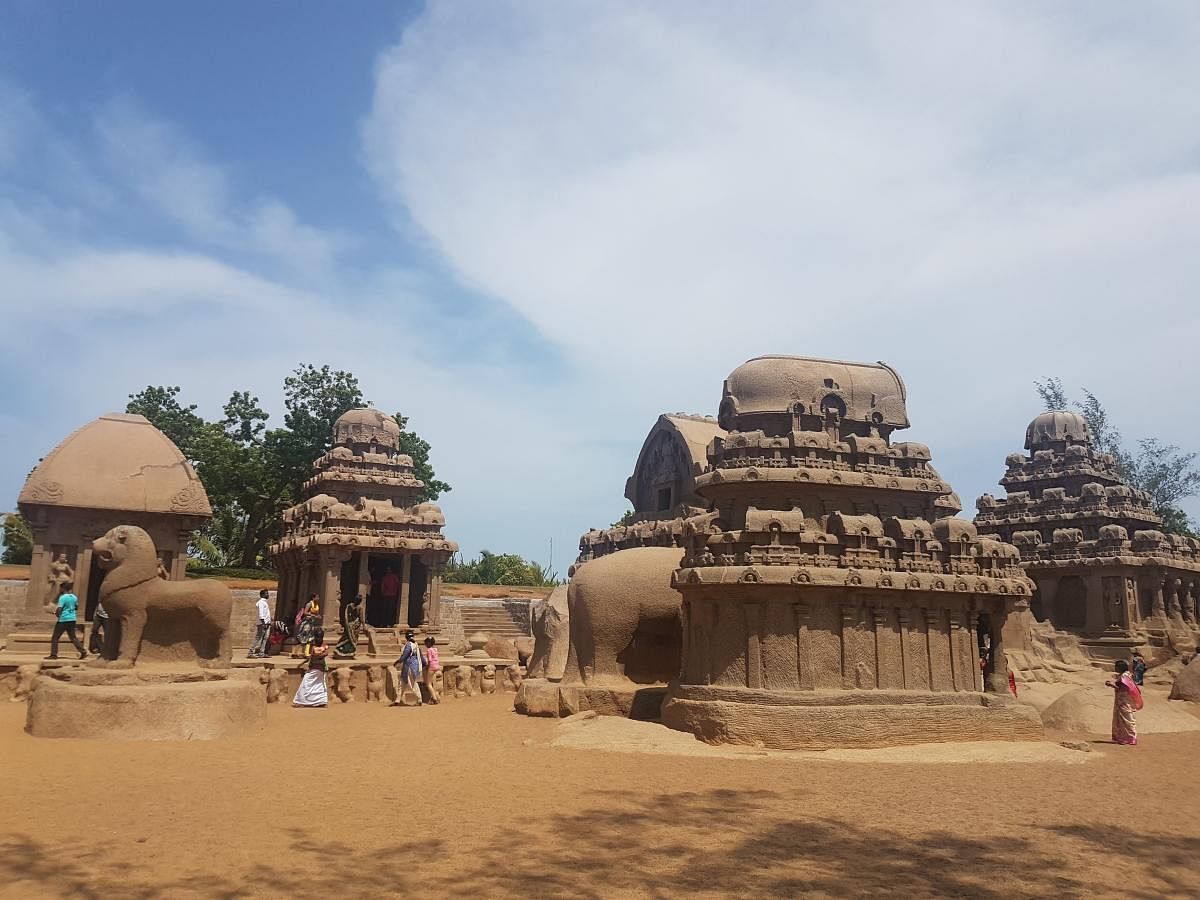
Mahabalipuram is eminently a culture enthusiast’s treasure trove and a beach lover’s paradise. For a cheerful holidaymaker, this hamlet, nestled in Kanchipuram district of Tamil Nadu on the Coromandel Coast, can offer a rightful blend of both. One can adore India’s rich heritage and imbibe a slice of its glory while basking in the sun, sand and the warm waters of Bay of Bengal.
The history of Mahabalipuram dates back to the early seventh century when it was founded by the Pallava Dynasty who made it their
major port city.
The stone architecture, seen here in the form of temples, monuments, rock reliefs and caves, are some of the oldest of their kind in India and hence, Mahabalipuram is earmarked as a UNESCO World Heritage Site and preserved by the Archaeological Survey of India. All the points of interest are in convenient proximity to each other which gives dovetailing to the legendary tales surrounding them.
Overlooking the sea, the Shore Temple harmonises the beauty of nature and architecture in unison and manifests that the Pallava kings indeed patronised art.
This edifice is an instance of pagoda- style architecture where the structure is built by laying stones, one on top of another. There are three shrines in the complex — biggest one facing the east, the other facing the west and the smallest shrine is in the middle.
The temple is dedicated to Lord Shiva and Lord Vishnu. Several rock-cut bulls form a boundary to the entire complex which houses many appealing rock figures and other structures. As the area has been in constant peril of tidal waves, tsunamis have been crucial in unearthing the past here.
Krishna’s butterball is a huge rock somewhat oval in shape, that is exquisitely balanced on a hillock and has been so for ages. It is absolutely immovable. In the vicinity, there are several boulders and cave temples many of which are unfinished. Krishna Mandapa and Ganesha ratha are some of the noteworthy structures. As you observe the intricate carvings etched in granite, you begin to wonder about the artisans who, over a millennium ago, with their craftsmanship and perseverance, chiselled those hard boulders bit by bit probably for years. This led to the formation of these everlasting architectural marvels.
The ‘Descent of the Ganges’ monument is a large rock relief which exhibits over a hundred human, animal, divine and mythical figurines to portray a story. It is believed to depict Maharishi Bhagiratha performing penance to please the gods for the descent of the powerful Ganges on earth.
Another version expresses a different tale. According to that, it depicts Arjuna performing penance to acquire pashupatastra and hence the name ‘Arjuna’s penance’. The engravings, by some means, adapt to both fables alike. Going further, you see the Pancha Rathas that are the five chariots in procession which are hewn out of a single solid rock.
These are monolithic temples — each built in a distinct style of architecture and dedicated to the five Pandava brothers and their wife Draupadi.
Apart from these, there are many small temples and sculpts, some undone, yet striking. These early medieval monuments are exceptional contributions of the Pallavas to our heritage. They were the pioneers of rock architecture in India and their legacy still abides by as one can see rock sculpture workshops and outlets displaying idols of deities and other artworks along the streets of Mahabalipuram even today.
A visit to this town gives a glimpse of the splendour of the Pallava Dynasty era that makes it a must-visit heritage destination.